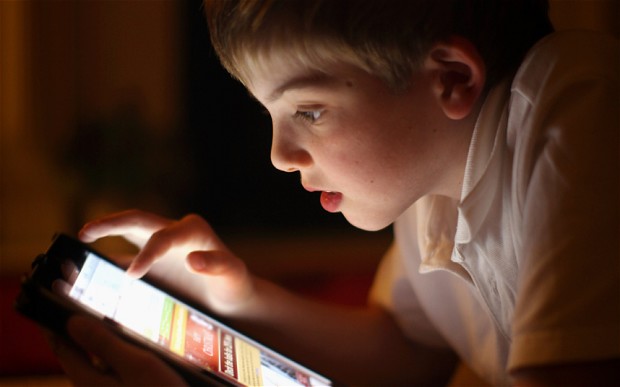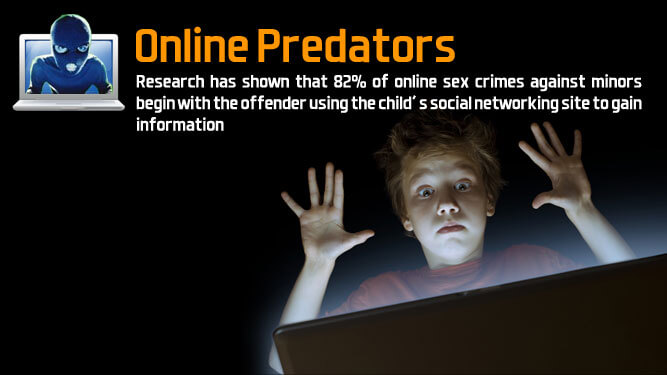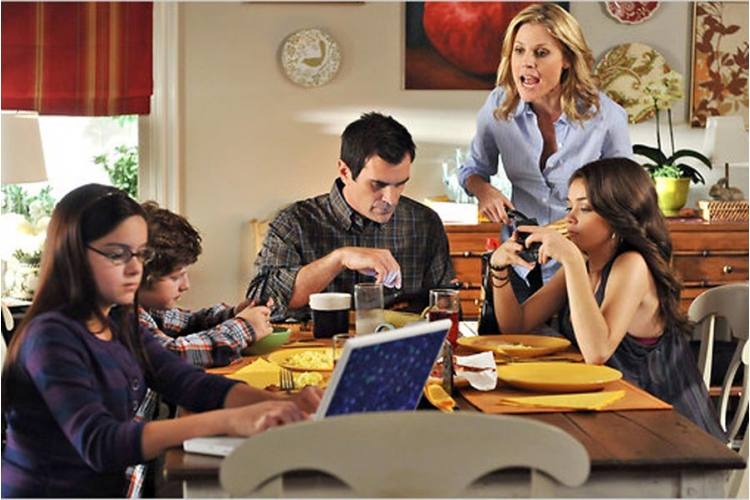
Written by: Saraa Abas
The development of media technology has requires human to infuse the usage of media as a form of communication tools and to gain information in which will help them to improve their knowledge and skills. Moving towards modernization, many parents began introducing the use of media in their children’s lives in early age, not only to communicate, but also as learning tools that will influence, persuade and embedded various information for future use.
Children nowadays have the access of using the internet, in addition, they now have collections of smart phones, computers, game console, tablet PC and many computer-mediated communication tools. The advancement of media technologies facilitate the need of human interface in communication. The richer the media, the more effects it has on it consumer. Not only that, the hours of consumer dependency on media also contributes to the effects of media to children. With the richer media, it provides visual aids, interactive communication, and conveys information that captures the attention of children in using media.
Media as companionship

Modern parents encounter many challenges in balancing their work and having to spend time with their kids. Therefore, turning to ‘gadget’ are the easiest way to keep their children entertain while they are away. To compensate the reduced in human face-to-face interaction between parents and their children, the media becomes their children’s
medium of companionship to satisfy their needs. These children uses the media to entertain themselves, acquiring information, building and maintaining social relationship with their family members, peer from school and form new connections from social networking sites. Children often engage with their smart phones, excessive time consumption on television and their social networking sites. Without having control, cases of obsessed with electronics are on the rise involving children are very concerning (Brown, Scharf, Bustos, Chavira & Stein, 2013).
Our children are depending on media for their development instead of human interface. The theory of Uses and Gratification Theory illustrates on how media usage comply with the need of human in acquiring information, personal and social integration and seeking the need of affection and tension release. This theory explains that the people are active in using a particular media and its users are self-aware and articulate the reasons why they use the media (West & Turner, 2014). However, in fulfilling these needs, the parent should have the responsibility to limit on what their children are consuming as it may affect their skills of human interaction in reality social situation. Face-to-face interaction should be encouraged.
The risk of disclosing private information
With easy access to the internet, at young age, we can see many children began to engage and use the social networking sites to form or maintain relationship in the virtual world. Now, a typical 7 year old have Facebook profiles, Twitter account and shares many photograph on Instagram on daily basis. Unconsciously, these children are sharing their location and vital information about their personal lives. Without guidance, this increase the risk of exposing private information to the public, jeopardising their information security and safety. Children may be not aware of their right of information and which appropriate information that are suitable to be shared to the public.
In the process of growing up, children are bound to make mistakes. Without having to know the consequences, they may disclose inappropriate information or photograph to the public, this makes them vulnerable to be discussed on public platform. Without having control of how the information are shared, cyber bullying are one of disturbing phenomenon that manipulate the information available on the internet and irresponsibly use it to bring damage to the children’s emotions and mentally. Suicidal cases among children and teen are highly record due to this sick behaviour. The Communication Privacy Management Theory explain how information can be shared and the ownership of information to determine the boundaries of private information that they are willing to share. When the children lost their ownership and control of their own information, one mistakes could lead to the turbulence of boundaries because the rules of privacy has been violated. We need to educate the children on the boundaries permeability in protecting our children safety in avoiding the public abuse.

Shapes the children’s perception and belief about the world
According to Christakis (2008), 90% of children spend large amount of time on television regularly before the age of 2 in spite of recommendation to contrary. Over time, with constant consumption of media, it effects on the children’s perception and belief about the world based on what they have been nurtured of. It can be positive or negative. Currently in Malaysia, the repetition of news reports on crime involving children are becoming regular. The on-going commentary about the situation and public campaign about children’s safety contributes to the perception of children about their surrounding environments are not safe anymore. Even though it is a good campaign to stay alert, however the negative feeling they feel in becoming the victim has shape negative perception about the world. Hence, limiting them to be optimistic and do social activities without having the risk of crime occurring.
Cultivation theory explains that the constant messages convey to the children shapes the perception about the world and society surrounds them. Through media, they will learn numerous facts on what are happening in the society (first order effect) and with these information, they will make general assumption about the condition of the world (second order effect). With heavy TV consumption, they will believe that the world is a violence place and crime will likely happen to them compared to children with light consumption (Gerbner, 1999).

Learns and imitates the behaviour seen on media
Children are still in the phase of learning and developing. They can be easily influenced by what they see on the media. The media content that they consume will have a significant effect in their behaviour. While watching television, children observed the behaviour of the subject and learn to imitate the action and behaviour pattern of the person doing. The phenomena of Malaysian children imitating the behaviour of scene and dialogues from the movie ‘KL Gangster’ is one of an example of the effect of media on children. With the exposure of violence towards children, this motivates aggression and develops disturbing behaviour to society as they learn and applied it in surrounding environments. If the response from the society are encouraging and positive, they will continued with the behaviour. If the response are negative, they will learned that aggressive behaviour are not acceptable in a society.
Most minors get into crime because of negative peer influence and elements of gangsterism which are penetrating the schools. The young society perceived gangsterism as a cool and trendy behaviour, hence, increasing youth participation in gangsterism and juvenile crime totalled 7,816 cases in 2013 as compared to 3,700 cases in 2012 (Lee, 2014). In Social Cognitive Theory, it believe that people are self-organising, proactive, self-reflecting and self-regulating. Human self-development, adaptation, and changed are embedded in social systems (Bryant & Zillman, 2002). Children learned the behavioural capability through observational learning in order to perform a behaviour. They will learn on what to do and how to do it. The responses of the behaviour will determine the likelihood of continuing or discontinuing the behaviour. Resulting from positive of negative response, it will associate with the expectation of each action done.
The usage of media can be beneficial and have negative consequences at times. Parent must be responsible for their children’s welfare and development if they want to raise their child that shares the same values that the parent wanting them to. Even though parent encounter many challenging phenomenon in raising their children, the usage of media must be proportionate and adequately used parallel with the need of their children. Human need to educate themselves on the purpose of using the media and balance their technology literacy with human actual interaction. Human physical interaction contains valuable moments that build the values and belief of a child. It gives quality time and organic ways of communication. The face-to-face interaction and attention given will develop the attention of need and nurture sense of love in a family.
Feature photo: Photo credit: bmag.com.au Image source
References
Bandura, A. (1994). Media effects: Advences in theory and research. Hillsdale: NJ: Erlbaum.
Christakis, D. A. (2008). The Effects of Infant Media Usage. The Author/Journal Compilation 2008 Foundation Acta Paediatrica, 8-16.
Gerbner, G. (1969). Towards ‘cultural indicators’: The analysis of mass mediated message system. Communcation Review, 137-148.
Gerbner, G. (1999). Television and its viewers: Cultivation theory and research. Cambridge: Cambridge University Press.
Jennings Bryant, Dolf Zillmann. (2002). Media Effects: Advances in Theory and Research. Taylor & Francis.
Fishbein, I. Ajzen. (1975). Belief, attitude, intention and behaviour: An introduction to theory and research. MA: Addison-Wesley.
Richard West, Lynn H. Turner. (2014). Introducing Communication Theory. New York: McGraw-Hill.
Robin L. Nabi, John L. Sullivan. (2001). Does Television Viewing Relate to Engagement in Protective Action Agaisnt Crime? Communication Research, 802-825.
Scott Brown, Michael A. Scharf, Cristina Bustos, Denise Chavira, Martin T. Stein. (2013). Media Addiction in a 10 Year Old Boy. Journal of Developmental and Behavioural Pediatrics, 34:375-378.
Thye, L. L. (2014, April 14). Juvenile crime on the rise. Retrieved from The Star Online: http://www.thestar.com.my/opinion/letters/2014/04/14/juvenile-crime-on-the-rise/
